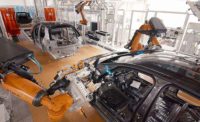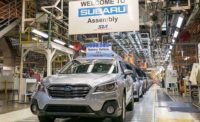Remember Super Bowl XLIV between the New Orleans Saints and Indianapolis Colts? With the Saints trailing 10-6 at halftime, Saints coach Sean Payton made one of the gutsiest gambles in NFL history, calling for an onside kick to start the second half. The Saints recovered the ball and drove down the field for the go-ahead touchdown. The team went on to win 31-17.
It was the sort of move that makes you a genius if it works or an idiot if it doesn’t. Across the country, governors are taking similar gambles on assembly plants. Sometimes, they pay off. Other times, they don’t.
In July 2017, Foxconn pledged to invest $10 billion to build a sprawling manufacturing complex in Wisconsin to make liquid crystal displays for computers, televisions and dashboards. As originally conceived, factory was to employ 13,000 people and create an additional 22,000 ancillary jobs.
To land the factory, Wisconsin offered $3 billion in tax breaks over 15 years—the largest tax package the state has ever offered. The package would later become an issue in Wisconsin’s 2018 gubernatorial election.
Now, Foxconn is reconsidering its plans. Rather than manufacture LCDs, the company wants to create a “technology hub” that would consist of research facilities along with some assembly operations. Instead of a manufacturing workforce, Foxconn intends to hire mostly engineers and researchers. The company already fell short of its job creation quota in 2018 and failed to qualify for any tax incentives.
If Wisconsin’s all-in bet on Foxconn winds up a busted flush, it would hardly be the first time. Many states have played that hand.
In 2004, state and local governments offered computer maker Dell $281 million in incentives to build an assembly plant in Winston-Salem, NC. The factory was expected to create 1,700 jobs and 6,500 ancillary jobs. Alas, the factory closed just four years after it opened in 2005. At its peak, it employed 1,400 people, and no more than 500 indirect jobs were created. Dell had to pay pack $26.5 million in incentives.
If Winston-Salem officials felt burned by the deal, it didn’t stop them from getting right back on the horse. In July 2010, Caterpillar accepted $73.5 million in incentives to locate a new assembly plant in the city. The factory opened in November 2011, and, though it’s had some ups and downs, it’s still running. The plant was originally built to make wheels and axles for mining equipment, but now focuses on railroad components. It was supposed to create more than 500 jobs, but at its peak, it employed 438. Today, the workforce is closer to 160, and Cat has had to renegotiate the incentives.
That’s how it is in the high-stakes game of bidding for assembly plants. You win some; you lose some. What looks like a promising market today can fall off the table tomorrow. Officials never want to lose an opportunity for hundreds of manufacturing jobs, but neither do they want to be left holding the bag when a project fails to deliver. What would you do?







